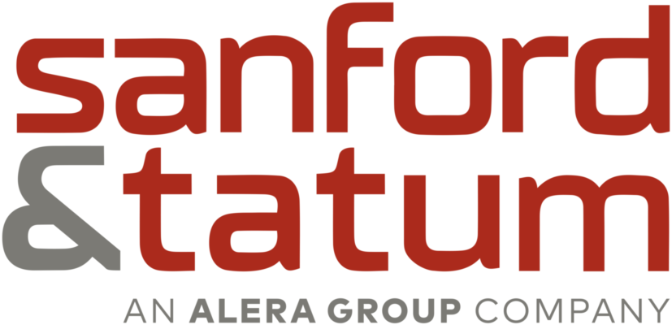
The National Safety Council (NSC) found that 1 in 12 workers is dealing with an untreated “substance use disorder” (SUD). Even if employers don’t see it, which is more likely with remote and hybrid work arrangements, substance use, misuse and addiction likely remain prevalent among their workforce. Furthermore, the NSC reports that employees with an SUD have double the health care costs as the average employee without one. Beyond health care costs, employee absenteeism and lost productivity climb sharply with substance use.
This article explains employee substance misuse’s impact in the workplace and explores ways employers can help prevent substance misuse and support employees in recovery.
Substance Misuse and Its Impact on Workplaces
Substance misuse is the unhealthy use of alcohol, drugs or other substances that negatively interfere with a person’s functioning or well-being. It can negatively affect peoples’ physical or emotional well-being, significant relationships, educational achievements, finances and other parts of their lives. Substance misuse also affects productivity, workplace safety and health care costs.
Alcohol and substance misuse or addiction by employees can have serious ramifications for employers. Employees who engage in risky substance use are absent more often, have lower productivity and poor work performance, are more susceptible to injury due to accidents and may have higher health care costs. These costs can represent a significant burden to employers, and the behavior can present the liability of a serious workplace accident due to an employee’s impairment at work. As such, employers can address potential substance misuse amongst their employees and implement policies and protocols to deal with such issues.
Employer Considerations
Employers can play an essential role in decreasing substance misuse’s social and financial burden and guiding the development of a healthy and productive workforce. According to the Kaiser Family Foundation, nearly half of Americans are covered under employer-sponsored health insurance, which is required to include coverage for mental health and substance use conditions. As such, employers may also offer employee benefits that address substance misuse.
Employee benefits are available to help address substance misuse and addiction. Employers can support employees with the following strategies:
- Maintain comprehensive health insurance coverage. Consider including substance misuse treatment resources as part of the employee benefits package. Where it makes sense, provide coverage for screening and counseling to reduce a potential cost barrier for seeking help. Under the Mental Health Parity and Addiction Equity Act, the financial requirements (such as copays and deductibles) and treatment limitations (such as visit limits) applicable to SUD benefits cannot be more restrictive than the predominant requirements or limitations applied to medical and surgical benefits.
- Focus on prevention. Substance misuse is preventable and treatable, with recovery rates comparable to other chronic health problems like diabetes and asthma. If employers promote prevention in the workplace, provide employee access to treatment and support recovery from substance misuse, they can help create healthier and more productive employees and communities.
- Provide resources for self-screening. Regular screenings can help identify substance misuse early, which can link employees to appropriate treatment earlier. Materials could include brochures, fact sheets, payroll stuffers, intranet, health fairs, posters and signs.
- Establish an employee assistance program (EAP). EAPs can help employees obtain information about supportive resources in the community. Emphasize that an EAP is based on privacy and confidentiality and that enrolling in the program will not jeopardize an employee’s job or reputation. This may encourage more employees to seek help.
- Offer alternative virtual options. Although common, EAPs may not extend far enough to address employee needs adequately. To avoid privacy concerns, telemedicine and other digital support can help employees overcome stigma barriers. The more options available, the greater the chances they will participate in services.
- Offer ongoing education. To remain effective, employers should provide various communications and materials about the risks of drug misuse or addiction and available resources for prevention, treatment and recovery. The goal is to continue raising awareness about substance misuse and help reduce the associated stigma so employees are more likely to get the help they need. For example, employers can include information in open enrollment and new hire health care materials since employees are thinking about their health at those times. ·
- Develop training to help catch red flags of SUD. Red flags can include increased mistakes or accidents, unexplained absences, difficulty concentrating, decreased performance and increased absenteeism. Employers can develop training or guidance for supervisors so they are well equipped to spot indicators of substance misuse and effectively work with an employee who is experiencing or recovering from it.
As with all workplace policies and programs, employers should practice discretion and stay compliant when addressing these serious issues. Generally, information about an employee’s substance misuse, like all medical information about employees, should be kept confidential.
Summary
Substance misuse is a growing problem in the United States, and its widespread impact makes it into workplaces. It’s likely to remain prevalent among today’s workforce, and the popularity of remote and hybrid working arrangements can make it even more complicated to identify and offer support and resources.
Unfortunately, addiction is stigmatized, discouraging many people with alcohol and drug issues from seeking treatment. However, employers have an opportunity to develop an employee benefits program that is holistic and addresses prevention, screening and treatment options while also taking deliberate steps to protect employees’ privacy as they receive treatment.
Contact Sanford & Tatum, An Alera Group Company for additional resources to address and combat substance misuse and addiction in the workplace.
This Benefits Insights is not intended to be exhaustive nor should any discussion or opinions be construed as professional advice. © 2022 Zywave, Inc. All rights reserved.

Discussion
There are no comments yet.